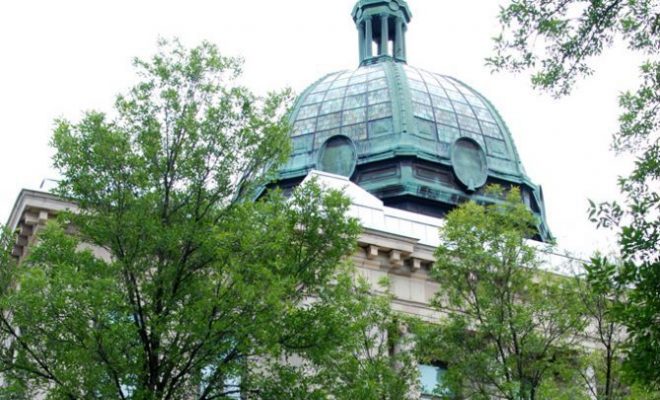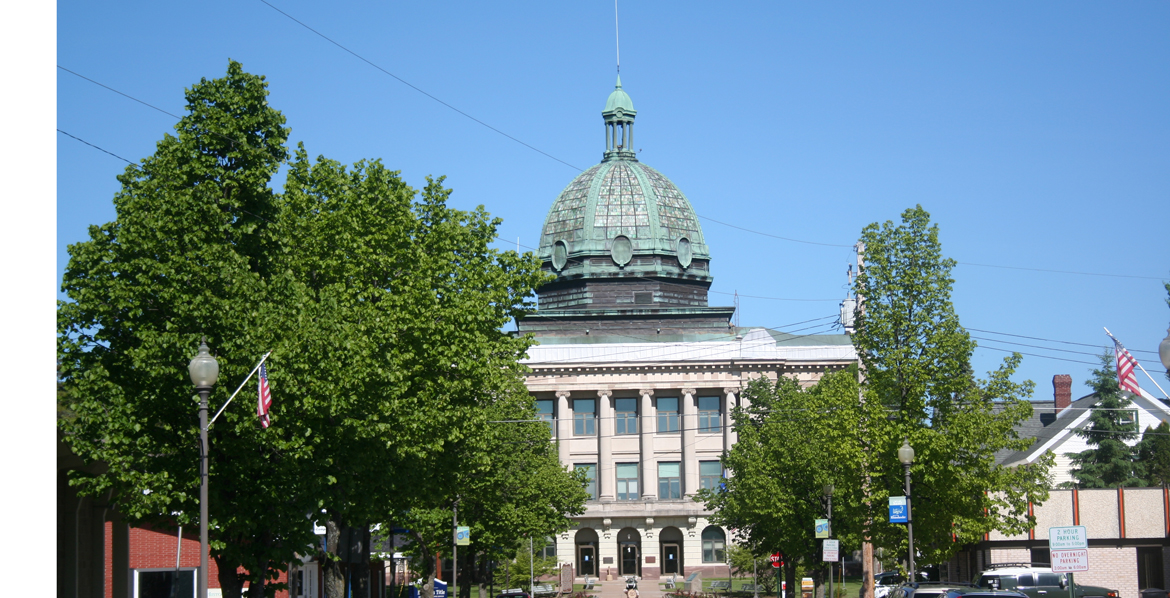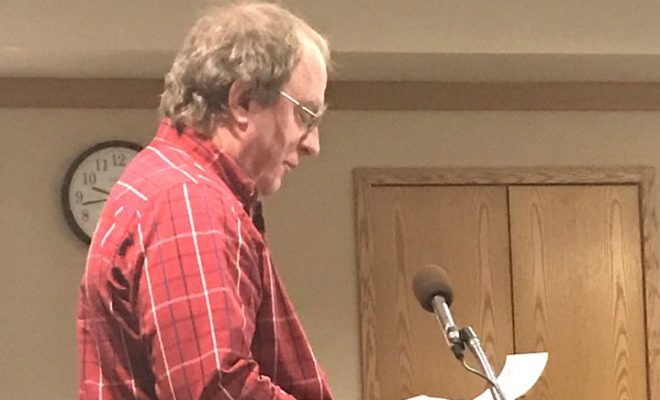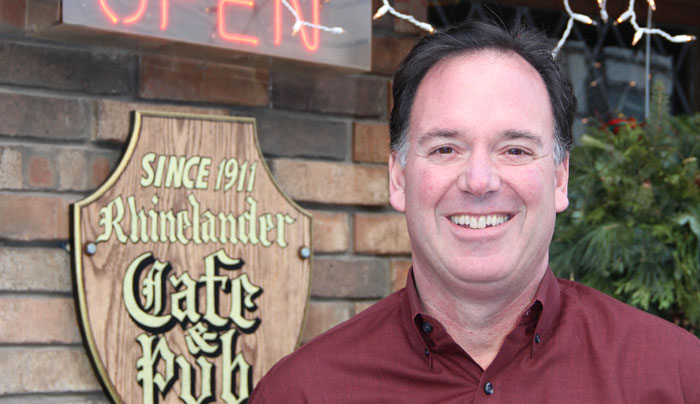County board approves budget, saves ADRC, UW Extension, fair at the expense of capital projects

By Lori Adler, reporter
The Oneida County board of supervisors met Tuesday for what turned out to be an all-day session. While other business was conducted, the main focus of the meeting was the approval of the 2020 budget. In the end, the Aging and Disability Resource Center (ADRC), University of Wisconsin Extension and the county fair were all fully funded, but it could be at the expense of several capital improvement projects.
With standing room only in the board chambers, the meeting began with a significant amount of public comment on pending budget issues. Citizens expressed support for the ADRC, the county fair and UW Extension. The budget was then presented, and debate began.
The first draft of the budget funded all departments as presented by the various committees including the county fair, ADRC and UW Extension. It also included 14 capital projects. The amount of capital projects was larger than in past years, including a significant project for the sheriff’s department that came in with a higher price tag than expected. In addition, 10 of the 14 projects were not identified until this year, thus throwing off the five-year capital improvement plan the board relies upon for decision making. The recommendation from finance director Darcy Smith, who prepared the budget, was a $4 million loan to cover capital expenses while still maintaining the budget in full and keeping a good amount of money in the general fund. It was explained that a good general fund balance is necessary in order to get a good credit rating, which in turn, means the county can borrow at a low interest rate. To accept the budget as presented, the loan option needed to be approved, though the specific details of that loan (such as the lender, rate and term length) would be voted upon at a future meeting.
As the loan would affect the tax levy amounts over the length of the loan, the board was not in agreement regarding the use of a loan. While $2.3 million from the general fund was proposed to be used toward the capital projects, some board members wanted to see more of that fund contributing to the projects rather than utilize outside lending.
The resolution before the board stated the loan would be no more than $4 million, but it would not be required to loan the full amount if not needed due to a reduction in projects costs or other items coming in under budget. Some supervisors were concerned, however, that the approved amount would become the spent amount.
“If we approve $4 million,” supervisor Jack Sorensen remarked, “we will spend $4 million.”
In response to these concerns, an amended resolution was put before the board, limiting the borrowed amount to no more than $3 million. Because the vote was regarding the borrowing of money, statutes require a super majority (3/4) to pass the resolution. With three supervisors absent, the vote required 16 yes votes to pass. When voted upon, the resolution failed (Yes-13, No-5, Absent-3).
The board then voted to reconsider the resolution in order to re-open the discussion.
Supervisor Bob Mott stated, “I would ask that those people who voted no and are continuing to vote no, tell us how they intend to pay for the capital improvement projects. I don’t know how it’s going to happen. I think we have to listen to our finance director as far as how much money is safe to use out of the general fund. It seems to me that if the projects have been approved by all committees and seems like they’re necessary, at some point, we’re going to have to pay for them.”
“The reason I voted no because I don’t believe the $3 million is going to be adequate to fund what we need to fund for two years,” Supervisor Robb Jensen replied, adding, “I don’t see how $3 million is going to do it, and we’ll be here a year from now probably borrowing again. But I’m going to flip because if we vote no, we’re at zero.”
However, when the vote was taken on the resolution again, it also failed (Yes-15, No-3, Absent-3).
With no lending approved, the board had to consider possible cuts in the budget if it wanted to fund all the capital improvement projects. One area of consideration was the ADRC budget. Though the full budget for the ADRC was recommended by the ADRC committee, the administrative committee had previously decided to consider the possibility of combining the ADRC with the social services department. It was suggested that approximately $130,000 could be saved annually through this consolidation.
Since a study would be required to determine if consolidation was a possibility, part of the ADRC budget ($68,000) had been placed in the budget as a contingency. If the study determined consolidation was not possible, the money could be moved from the contingency line item back to the ADRC budget. There was, however, strong opposition to this from board members as well as ADRC staff and the general public.
Supervisor Jim Winkler moved to take the $68,000 from the contingency line item and move it back into the ADRC budget and to no longer consider consolidation. After much discussion, the two parts of the question were separated. The first part, returning the money to the ADRC budget, passed (Yes-14, No-2, Absent-5), while the second part of the question, to no longer consider consolidation, was not voted upon since it did not affect the budget or tax levy.
Supervisor Scott Holewinski then moved to cut the UW Extension budget altogether, essentially saving about $180,000 per year. This motion too was met with resistance, with many supervisors commenting on how much the extension contributes to the community. The vote, however, was considerably closer than the vote on the ADRC; however, the motion to cut UW Extension failed (No-8, Yes-7, Absent-6).
Since no cuts were made, the only option left to the board in order to pass a balanced budget was to remove some of the capital projects. Only four projects were included in the final budget. The biggest hit to the capital improvement budget was the sheriff’s department radio infrastructure (towers) project at a cost of over $3.5 million. This project goes hand-in-hand with the sheriff’s department squad car mobile radio upgrade so that project was approved as well at a cost $350,000. Software upgrades which began last year and continue to this year have already been committed to and approved so that money needed to be in the capital improvement budget, the cost of which is $165,000. These three items equate to just over $4 million, which will be moved from the general fund to the capital projects fund. A final capital project, impervious surface mapping, was also approved, but the department in charge of this project had money in their budget, as well as grant money, to completely fund the project, thus not affecting the overall budget or tax levy.
Ten capital improvement projects that had been identified by the administrative committee to be completed in 2020 were not selected. These include information technology infrastructure and server upgrades, sheriff’s department body scanner purchase and taser replacements, highway department buildings and road reconstruction.
After eight hours of meeting, the amended balanced budget was then voted upon and passed. The impact of the budget on the tax levy is $2.35/$1,000 of equalized value, a decrease of 2.9% from 2019. Throughout the entire meeting, the county fair budget was never at risk and was fully funded when the final budget was approved.
Additional loan considerations may be possible in the future to fund the remaining capital projects. Though no meeting of the board of supervisors is currently scheduled for December, a special meeting on this topic may be added. Capital projects and funding has been added to the administrative committee meeting agenda for November 18.
Leave a reply
You must be logged in to post a comment.






